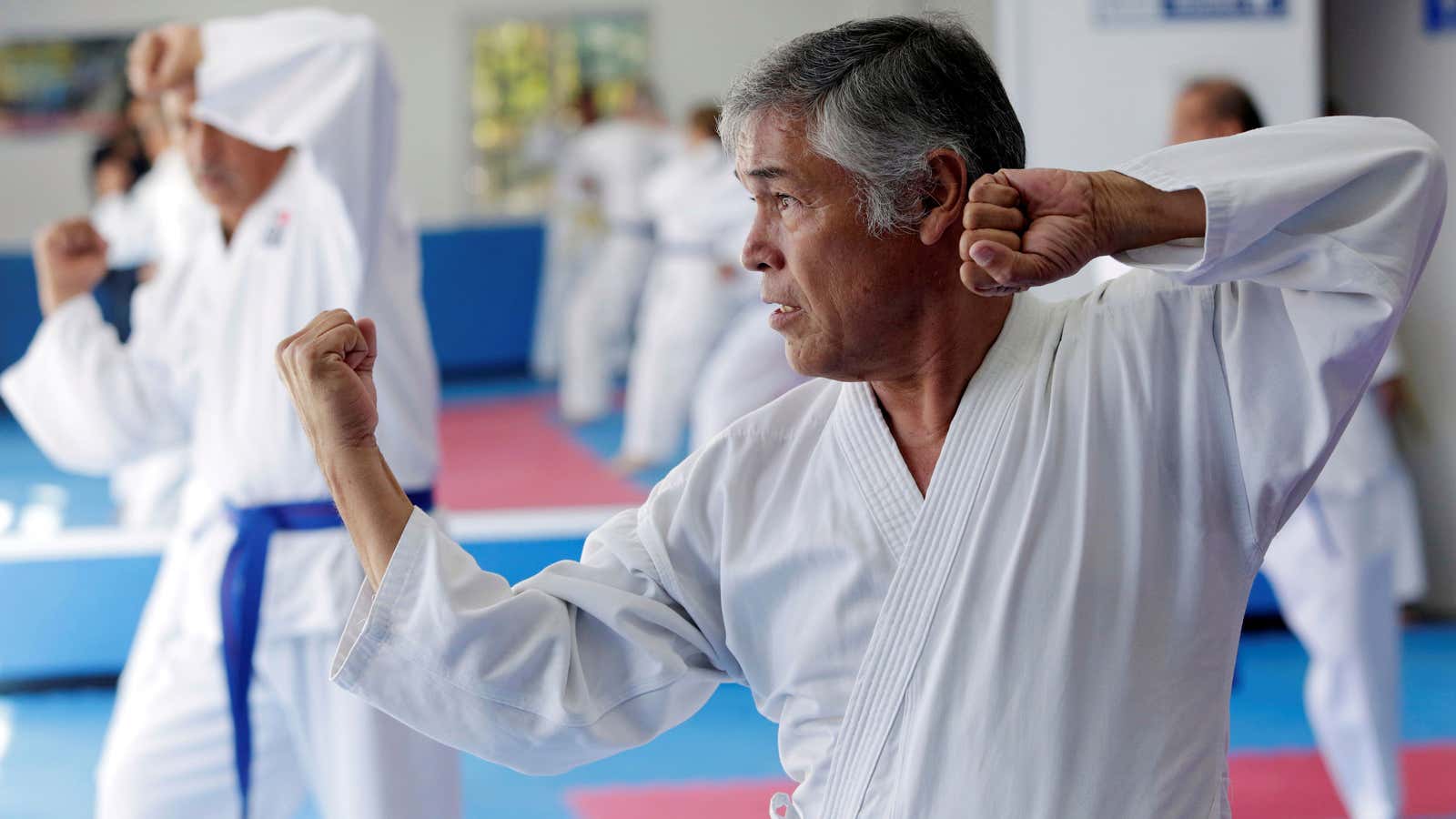The same month I graduated from college, my mother had a big birthday. We decided to celebrate with a week in France, a trip I imagined as a stream of Parisian dinners that would extend late into the night as we shared stories over carafes of red wine.
When the week finally rolled around, I was surprised when instead my always on, unstoppable mother started acting, well, old. Or at least, her ageist version of old. She put herself to bed early and sidelined herself from the fun, saying things like, “who wants to see a woman of my age out all night?”
It was 9pm. My mother was 50 years old.
That’s the insidious power of ageism. We’ve internalized stereotypes about what’s “age appropriate” and what’s not, and these beliefs quietly guide our choices: The invitations we accept. The trips we go on. The jobs we apply for. The wisdom we choose to impart. Or not.
These pervasive negative beliefs are out of step with the reality of aging. More people are living longer and healthier lives than at any time in human history. This, coupled with economic necessity, has contributed to the rising rate of Americans working past retirement age. As of last year, almost 20% of Americans aged 65 and older have continued to work—up from 12% in 1990.They are part of a workforce that now includes four generations working side by side, creating a new opportunity that most organizations are quite simply unprepared for.
So why is ageism so accepted? I believe the way companies portray older people is at least partly to blame in reinforcing negative stereotypes of aging.
Try this: Search online for images of “old people.” Based on the results, you might think that the world’s elderly population was made up nearly exclusively of wrinkled white people wearing pastel cardigans and hanging out with—you guessed it—other old people. Even more bizarrely, a number of the images feature silver-haired people grinning wildly and giving a thumbs-up. “Old people” as portrayed in popular internet search results are almost never at work, which flies in the face of actual workplace demographics.
The clichés and imagery we take in matters. It’s why organizations are taking notice, and changing what we see. The City of San Francisco, for example, recently mandated that 30% of public art feature real women (currently, only three of 87 public statues of non-fictional figures depict women). The Accessible Icon Project designed an alternative symbol for the traditional accessibility icon, replacing the static wheelchair user with one in motion. And stock photography houses are seeing a surge in searches for images featuring women in fields where they are traditionally underrepresented.
After nearly six years of working as a consultant and advisor to AARP and its bold, age-disrupting CEO, Jo Ann Jenkins, I have come to believe that most of us are accidental ageists. While AARP has a long history of working to legally protect us from overt age discrimination, they’re increasingly fighting for a more diverse and authentic portrayal of aging. As business leaders, designers, product managers, and marketers, we need to be aware of the power of imagery to shape belief. We can continue to perpetuate ageism, or we can celebrate a more positive, active, and accurate portrayal of people as they age.
Specifically, leaders can begin addressing age bias in imagery with these steps:
Consider your company’s digital presence: Whose stories do you feature? Employees of a mix of ages or just one generation? Does the portrayal of your company mirror the age diversity of your teams? Who are you inviting in? Who are you inadvertently keeping out?
Now consider your marketing materials or product packaging: Does the imagery reinforce negative stereotypes about aging, or does it tell a more authentic story? Do the images you put out in the world reflect the age diversity of your customers? Are they perpetuating clichés about aging or confronting them?
When we participate in ageist clichés as employers, marketers, designers, and leaders, we’re perpetuating stereotypes that are factually wrong. We’re shortchanging our businesses, our employees, our customers.
And, importantly, ourselves. We risk missing out on years of extended contribution. Not to mention adventure. Fortunately, my mother’s bout with “early onset ageism” in France was an unexpected gift. It made her become vigilant about living how she wants, not how others expect her to. This has included celebrating her 70th birthday by paragliding off a mountain, wearing bikinis on the beach, and enjoying many dinners that extend late into the night over carafes of red wine.
Jessica Orkin is the president of SYPartners.
